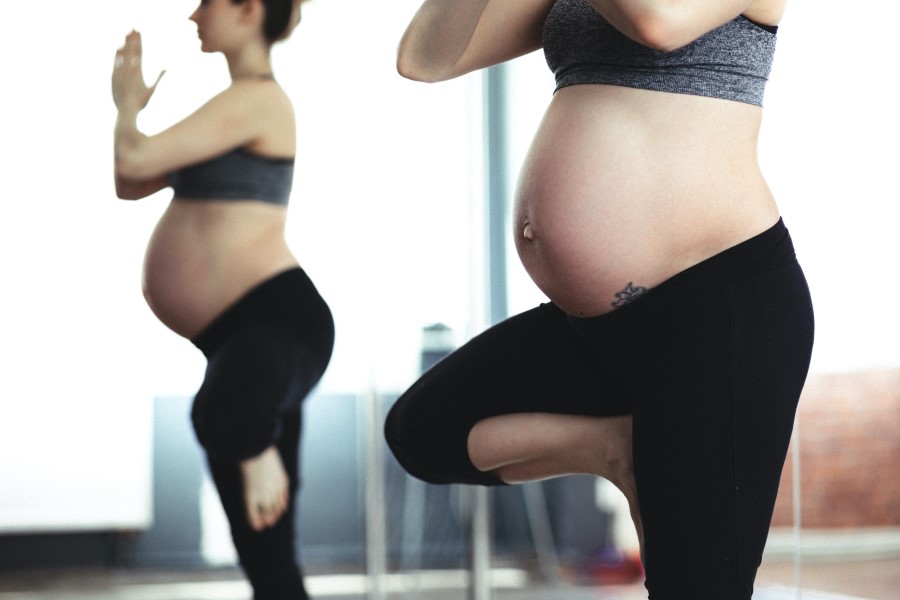Childbirth is one of life’s greatest gifts a woman can experience. That said, it comes with a whole load of hard work, stress, and anxiety, especially if it’s your first time going into labour. Hence, it is important for expecting mothers to prepare themselves physically and mentally for what lies ahead, before experiencing any signs of labour. And the first step in doing so is to understand what happens during the three stages of labour.
The 3 Stages of Labour: What To Expect
Stage 1: Dilation Of The Cervix
During the first (and longest) stage of labour, two things will happen. Firstly, contractions help the cervix become thinner (effacement). Subsequently, the cervix will stretch and open (dilation), thus allowing the baby’s head to descend. The first stage is also divided into two phases.
- Latent phase (0-4cm dilated). Things you’ll experience during this phase are back and/or abdomen pain, nausea, and a ‘show’. A ‘show’ refers to a plug of thick, jelly-like pink mucus that’s discharged from the cervix. In this phase, contractions are shorter (30 to 40 seconds) at an irregular interval.
- Active phase (4-10cm dilated). The cervix dilates at an approximate rate of 1cm per hour until it is fully dilated at 10cm; wide enough for the birth of the baby’s head. Contractions are stronger and more frequent in this phase, and last about 60 to 90 seconds every three to five minutes. The pain is felt higher in the abdomen and gradually moves down near the pelvis and lower back.
Although labour is painful, there are various pain relief options to make the signs of labour more bearable. This includes the usage of epidurals, Entonox (a mix of oxygen and nitrous oxide gas), pethidine injections, and relaxation techniques (more on this later).
Stage 2: Delivery Of Baby

The second stage of labour begins when the cervix is fully dilated up until the baby is delivered. There are also two phases here: The passive phase, where the baby’s head descends into the birth canal; and the active phase, where the mother pushes the baby out into the world. The second stage of labour can last anywhere between 30 minutes and two hours. Here are a couple of recommended positions for a comfortable delivery:
- Upright position: By standing up straight, you’re using the force of gravity to your advantage as it allows your baby to naturally move downwards into the pelvis. You can lean against a wall (or your partner) for extra support. FYI, women who opt for this birthing position (or on all fours), have reportedly experienced less pain, shorter labours and pushing times, as well as fewer perineal tears.
- Lateral position: This side-lying position is good if you’re too tired to stand, and is better than lying on your back as it does not compress any major veins. It also allows the midwife or your partner to assist by holding one of your legs upwards as you push. Other benefits of this position include easing the pain of certain contractions, reducing pressure on the perineum, and slowing down a too-fast delivery (yes, there’s such a thing!).
Stage 3: Delivery Of Placenta
Also referred to as “afterbirth”, the third stage of labour involves the delivery of the placenta and membranes after your baby is born. There are two ways in which this can happen:
- Active management. A contracting drug is injected into the mother’s thighs as the baby’s head is crowning. This helps the uterus contract down to speed up the placental separation. It also reduces blood loss post-childbirth. This is a faster method that takes about five to 10 minutes.
- Physiological management. The placenta is delivered without any assistance or drug, besides the mother’s effort in gently pushing it out. This usually takes up to 30 minutes, which is a bit longer than active management.

That said, the cord is usually left to pulsate for a few minutes before being cut so that your baby can receive more placental blood for an oxygen and blood volume boost. If you’ve had an episiotomy (perineum incision) prior, the area will then be cleaned and stitched. Once all is well for both mother and baby, you’ll get some quiet time alone and be discharged the next day.
How To Mentally Prepare Yourself For The 3 Stages Of Labour
Communicate & Seek Emotional Support
Having the support of a significant loved one is crucial for relieving stress and to reassure the mother that she isn’t alone in her pregnancy. Hence, speak to your partner and let them know how you’d like them to help you throughout the experience. You can also seek emotional support from friends. Talk to them, ask for advice, and get insights from their experiences. Feel free to share your excitement and anticipation with other couples and friends who have kids too.
Manage Stress With Relaxing Activities

Finding it hard to relax? That’s completely normal. You can manage your stress by turning to relaxing activities and techniques that are proven to help alleviate all that anxiety. Some of these include yoga, gentle forms of exercise (like brisk walking, swimming, and gardening), aromatherapy massage, and hypnobirthing techniques.
Related: Tired? Anxious? Try These Simple Mindfulness Meditation Exercises To Calm Your Weary Soul
Train Your Brain With Hypnobirthing
For an easier, more comfortable, and stress-free birth, give hypnobirthing a try. It’s an antenatal programme that’s been proven to help combat fear, anxiety, and pain before and during labour. Some of the self-hypnosis and relaxation techniques include deep breathing, positive visualisation, and labour comfort measures. Through hypnobirthing, mothers are able to train their brains to elicit a deep relaxation response on demand. It’s a method that’s even used by celebrities like Jessica Alba and Kate Middleton.
How To Physically Prepare Yourself For The 3 Stages Of Labour
Stay Active & Get Sufficient Rest
One of the best ways to physically prep your body for labour is by getting lots of sleep. That means going to bed early and clocking in eight hours of rest. Exercising is equally important too, not just for the stress-relieving benefits, but also to strengthen the muscles you’ll be using during childbirth. For instance, deep squats will help relax the pelvic floor muscles, cat/cow poses are great for alleviating lower back pain, and yoga can ease pregnancy discomfort while stretching your muscles to prepare for childbirth.
Massage The Perineum With Olive Oil

The perineum, which is the area between the vaginal opening and anus, gets stretched during labour and birth. One way to reduce the risk of severe bruising and tearing is by giving it a massage using olive oil. It’s best to do this about four to six weeks before your due date. This encourages blood flow to the area, which will soften the skin tissue and increase elasticity so it stretches with ease during childbirth.
Load Up On Wholegrain Carbs
Apart from sticking to a healthy and balanced diet, you can increase your intake of wholegrain carbohydrates like oats, quinoa, brown rice, and more. After all, complex carbs are known to release energy slowly and this will keep you well-fuelled during labour. So load up on these in your final weeks!
Ease Your Anxiety By Preparing Yourself For The 3 Stages Of Labour

Knowing what signs of labour to look out for and what to expect during the three stages of labour are surefire ways to reduce birth-related stress and anxiety. This gives you the time to physically and mentally prep your body and mind, so you’ll be a little more ready when it’s time to head to the hospital.
Before you head to the hospital for delivery, make sure to download this hospital bag checklist so you have everything you need for both mum and baby. And once your baby is delivered, know what to expect in their first year of growth with this handy guide.
